We are Time and Space
especiales
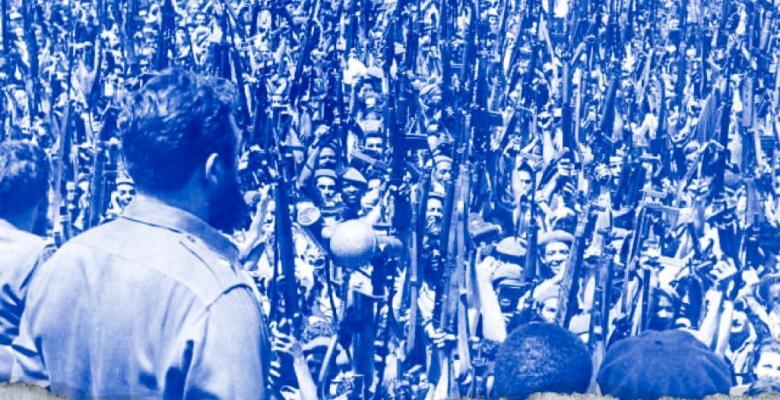
We travel along the road, and the living spaces of history follow one another. Cintio Vitier describes the “moral sense” that nature acquires:
the geography of marches and battles, of victories and defeats: Paso de Lesea, Mina de Guáimaro, Cocal del Olimpo, Jimaguayú, La Sacra, Palo Seco, Naranjo, Mojacasabe, Las Guásimas, Cafetal González, Lagunas de Varona, Loma del Gíbaro, Zanjón, San Ulpiano, Baraguá—he enumerated the poetic names in his splendid essay, "That Sun of the Moral World."
The moral geography of Homeland is an open book of history: whoever doesn't know how to read it, whoever doesn't feel it, won't be able to, won't know how to defend themselves. As we travel through space, we also travel through time, and anniversaries intersect in our small lives. Before reaching Guáimaro, where the first constituents of the Homeland met - Céspedes, Agramonte, Cisneros - on April 10, 1869, and a few days later, a woman without a vote, Ana Betancourt, made her word count, we stop at a sign, in front of a dark and ugly obelisk, the place where the ignominious Pact of Zanjón (1878) was signed. Beginning and end of a stage of struggles for independence and social justice, protested by Maceo in Baraguá a month later. In Guáimaro, recently remodeled, is the Museum of the Constitution, built with the monetary contributions of war veterans and also the beautiful monument to Ana, the precursor. A day later, on April 11, Cubans commemorated in Playita de Cajobabo the 130th anniversary of the landing of Martí and Gómez, which restarted the war in hiatus at Zanjón: the end and the beginning, this time both inverted, to achieve independence. It could not be then either, because the greed that germinated in the North, the Giant who sought to defeat David.
I can't help but recall that thirty years ago I was among the organizers of the Centennials: that of Antonio and José Maceo along with Flor Crombet and twenty other patriots for Duaba; that of Martí and Gómez for Playita. I was there at the ceremony presided over by Commander Almeida, in that brief and intense space, like the history of Cuba. The emotion embedded itself in my skin like saltpeter; the national anthem and Balaguer's words of remembrance echoed on that beach of stormy waves and large rocks, which ends a few meters from the shore, in an imposing cliff. There are sacred places that every Cuban must visit. Those thirty years that have passed count in a person's life as much as the hundred we commemorated then. There was another, more intimate tribute that day in which I didn't participate; at nightfall, Fidel arrived, holding the Cuban flag, his guerrilla boots at the water's edge, his gaze fixed on that choppy sea that brought the greatest man of Cuba and the Americas. A conversation from son to father, a lightning-fast encounter in space and time.
Yes, Cuba's history is brief and intense. It does not exhibit the patience of ancient cultures, nor the hermetic seal of processes that simmer slowly. What it is was conquered with the edge of the machete. The daughter of slave owners and slaves, of colonizers and colonized, of foreigners who arrived or were brought in, of rogues, adventurers, and dreamers, Cubanness was a heretical construction. Caliban named it Retamar, appropriating the symbol created by Shakespeare, because in the language learned from Prospero—the colonizer who "civilizes" Caliban, the colonized—he cursed the oppressive father. A culture forged in resistance, every blow, every kiss, every dream, was assimilated and adapted to its circumstances.
This constant brewing, as Ortiz pointed out, is its strength and its weakness: it doesn't freeze, it's true, but its unfinished forge exposes us. If ancient peoples only offer a thin layer of appearances to the cultures that try to colonize them, because beneath them lies an impenetrable core; the Cuban, a new people, as Darcy Ribeiro would say, opens its skin to the new, to the strange, which is ignited as soon as it enters. Miscegenation is not just a matter of skin, but of soul.
I confess, I didn't quite understand Cintio Vitier when he determined that the cause of the exodus in 1994 was the absence of Martí's words in the souls of those who left. In Martí lay the time and space of Homeland; in him, the intensity of a history as brief as his body, as large, indeed enormous, as his work, was personified. Cuba has no past; its history is present and future. If you don't know it—that is, if you don't know yourself—you have no roots to grow from.
It's the history of a nation engendered by colonialism, ninety miles from the space where, simultaneously, imperialism was born. This was what Martí saw and understood, fighting his entire life to overthrow Spanish tyranny, eager to prevent the United States from descending upon our lands in the Americas. This April 16th brings us another decisive date, one that took place at a Havana street intersection: the 1961 declaration of the socialist character of the Cuban Revolution. The Revolution, which had gone from being anti-colonialist to anti-imperialist, had rescued Martí (and the Homeland) from death on that first centenary of his birth. Three days later, on the 19th, the first military victory over imperialism would take place at Playa Girón. But history, like life, intertwines subsequent events with those already experienced, and creates the illusion that they are all happening right now, because they mark and define us as Cubans. Martí's arrival at Playita—"Jump. Great joy," he wrote in his last diary upon setting foot on Cuban soil—began a journey that passes by the little house of Salustiano, whom Fidel would later meet, stops in Mejorana, and ends in Dos Ríos, now all celebrating their 130th anniversary. I also lived through that second centenary, the anniversary of his physical death, when he returned again at the invocation of the Homeland, to explain that we were not castaways of that failed socialism, but protagonists of a deep-rooted, anti-imperialist, rational, and emotional socialism, the child of poetry. A natural socialism, not one of false erudition. The seemingly simple leap from the boat to the sandy beach was, in reality, a leap into the infinity of history, into the impossible; it was forever a leap of poetry.
Among so many dates carved into the body of Homeland, no matter if centuries old or recent, whether great or seemingly small, among so many heroes who came before us and will come after us, women and men of great virtues and flaws, who did not stop in the face of betrayals and failures, who fought for every victory, even if they were not always understood, Cuba stands tall, and we feel proud to be Cuban. It’s not an idyllic story; each one of us got as far they could, given their class conditions or skills. But the Homeland didn't stop. And among everyone, even those who abandoned it, the path began to take shape, the unity laboriously achieved in 1959, around the most radical project of a nation. They'll try to make us forget, but a simple road trip will bring us back to the time and space of what we were and are, of what we will be.


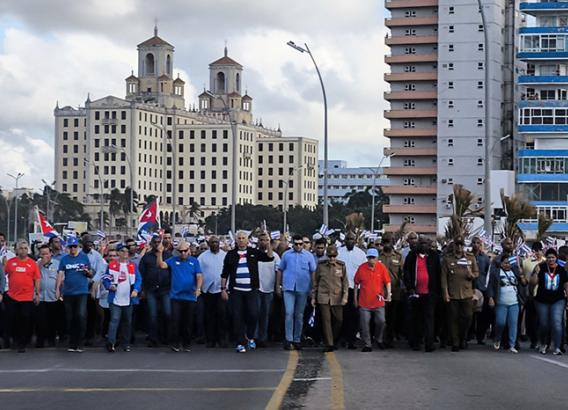
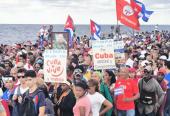

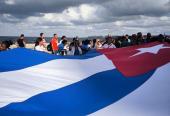
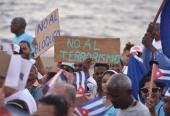
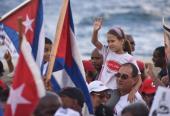


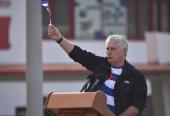
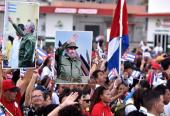

Add new comment